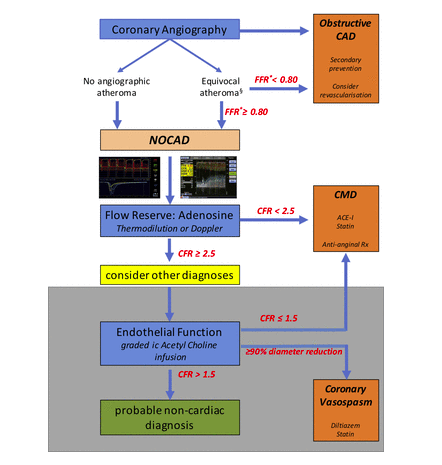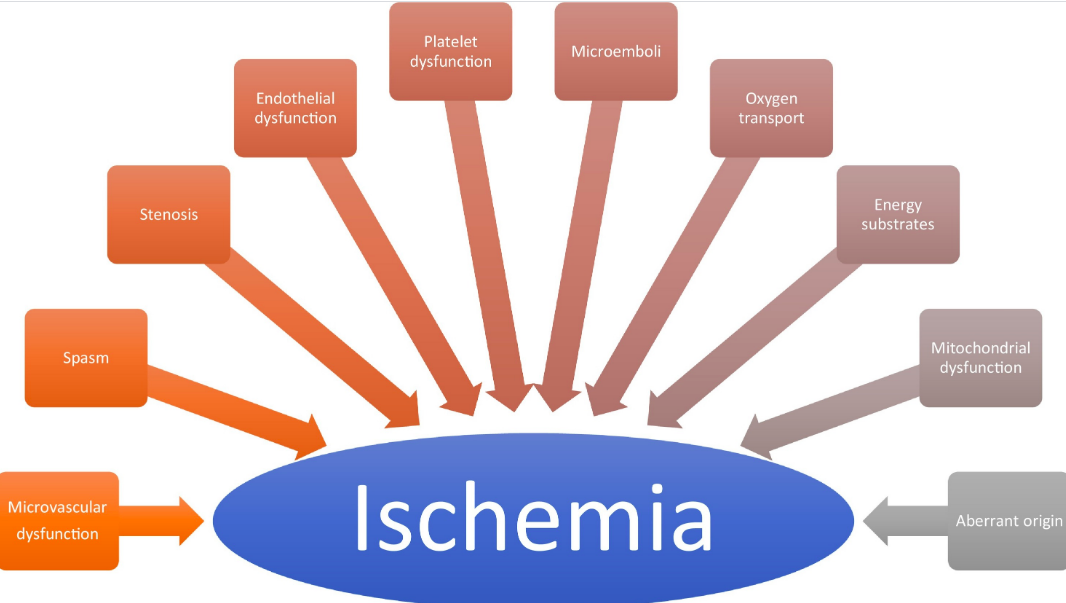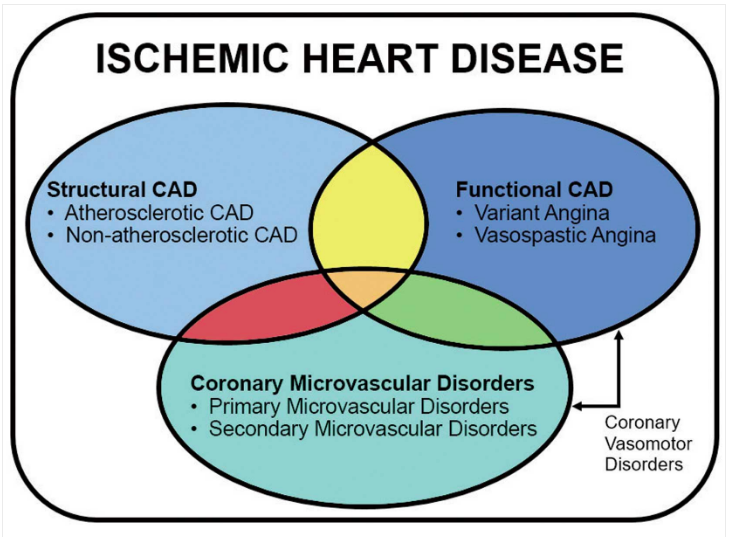Angina by definition is a transient Ischaemic episodes not leading to cellular death. As such it should not cause chronic fatigue. However, during an anginal episode, if the ischaemic territory is large enough or if critical component of the heart are involved (e.g. Papillary muscles and mitral valve), then it may be associated with fatigue and/or shortness of breath
What is the difference between Endothelium Dependent CMD and non Endothelium Dependent CMD?
The wall of the blood vessel (coronary artery) supplying the heart muscle has got three layers: the innermost layer contains endothelial cells, the middle layer contains the smooth muscle cells and the outermost layer contains collagen fibres for support.
The endothelial cells naturally release a substance called nitric oxide (NO), that then diffuses along into the neighbouring smooth muscle cells and causes these cells to relax. This leads to the coronary artery dilating, which results in an increased blood flow to the heart muscle. This is an important physiological response to exertion.
Endothelium-dependent CMD essentially means an inability of the endothelial cells to produce nitric oxide. As a result, the smooth muscle cells are unable to relax and the coronary artery is unable to dilate as required. This results in blunted increase in blood flow to the heart muscle during times of stress, which results in angina.
Endothelium-independent (or non-endothelium dependent) CMD refers to an inability of the smooth muscle cells to relax despite an adequate amount of nitric oxide. This, again, results in blunted increase in blood flow to the heart muscle during times of stress, which results in angina.
Therefore, both group of patients have an inability to dilate their coronary arteries in response to stress, which reduces the blood flow to the heart muscle during times of stress, leading to angina
Invasive coronary physiology in patients with angina and non obstructive coronary artery disease: a consensus document from the coronary microvascular dysfunction workstream of the British Heart Foundation/National Institute for Health Research Partnership
Diagnosis of patients with angina and non-obstructive coronary disease in the catheter laboratory
Haseeb Rahman, David Corcoran, Muhammad Aetesam-ur-Rahman, Stephen P Hoole, Colin Berry, Divaka Perera.
Lay Summary – Defining the specific type of CMVD in patients can improve management
https://heart.bmj.com/content/105/20/1536
Small‐Vessel Disease in the Heart and Brain: Current Knowledge, Unmet Therapeutic Need, and Future Directions
Colin Berry, Novalia Sidik, Anthony Pereira, Thomas J Ford, Rhian M Touyz, Juan-Carlos Kaski and Atticus H Hainsworth
Lay Summary – Can CAS and CMVD affect other organs, in particular the brain.
https://www.ahajournals.org/doi/10.1161/JAHA.118.011104
Myocardial Ischemia – from Disease to Syndrome
Mario Marzilli, Filippo Crea, Doralisa Morrone, Robert O. Bonow, David L. Brown, Paolo G. Camici, William M. Chilian, Anthony DeMaria, Giacinta Guarini, Alda Huqi, C.Noel Baire yMerz, CarlPepine, Maria Chiara Scali, William S. Weintraub, William E. Boden
Lay Summary – Updates knowledge and understanding of INOCA
https://www.internationaljournalofcardiology.com/article/S0167-5273(20)32112-4/fulltext
The Who, What, Why, When, How and Where of Vasospastic Angina
John F. Beltrame, Filippo Crea, Juan Carlos Kaski, Hisao Ogawa, Peter Ong, Udo Sechtem, Hiroaki Shimokawa, C. Noel Bairey Merz
Lay Summary – Detailed information on Coronary Artery Spasm
https://www.jstage.jst.go.jp/article/circj/80/2/80_CJ-15-1202/_html









